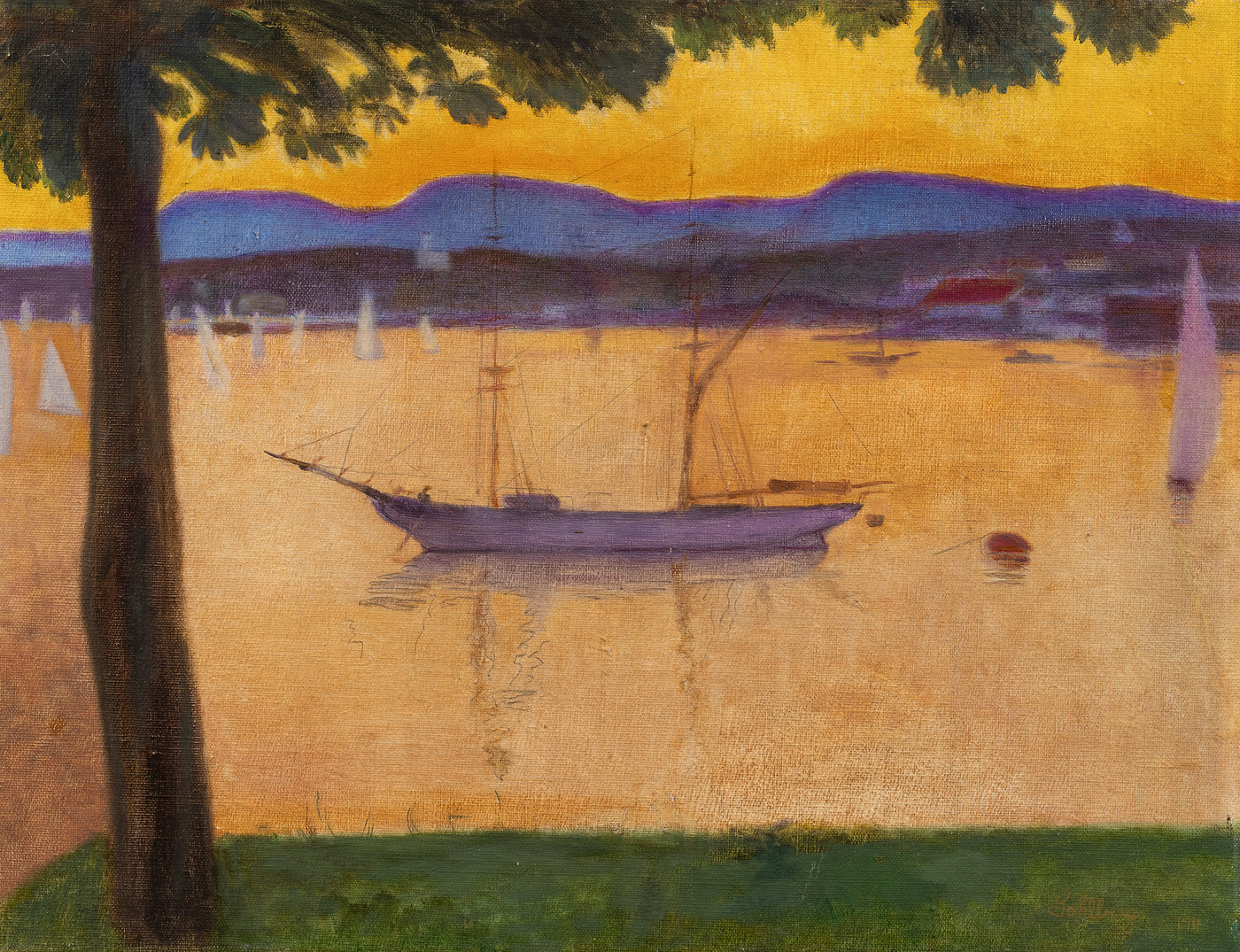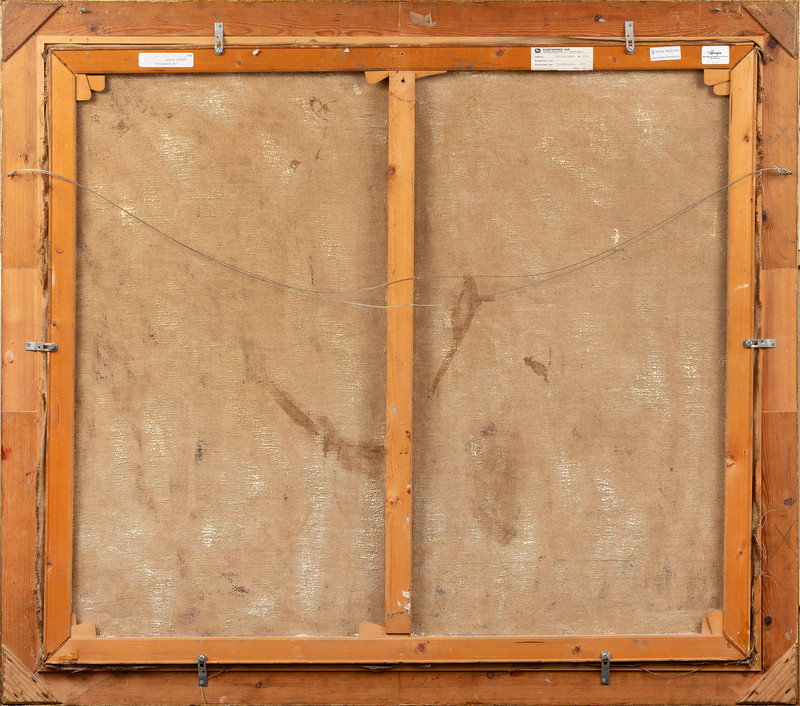The German Expressionist exhibition at Kunstnernes hus in 1932 showed paintings with a strong use of color, and a simplified expression. Erling Enger, who had been one of Axel Revold's students, broke with the French aesthetics that had been the starting point for the teaching, after seeing this exhibition. In 1933, Enger participated in Kunstnerforbundet's exhibition of 11 young painters with landscape motifs, which clearly showed a new direction in his art after the break-up. Otherwise, we see the biggest change in Enger's art in the autumn of 1934, with a rejection from the German-inspired influence, and towards a more lyrical abstraction.
Inspired by Sigurd Winge, Enger learned the powder technique. The technique had been developed by Rolf Nesch during his years in Hamburg. The technique consisted of sprinkling the dry colour pigment on a lacquered surface, so that it was fixed without any other binder. This gave the colour a stronger clarity and produced a surface like pastel chalk. By repeating the process with pigment powder and varnish, the surface got a rough and brick-like surface. The method gave the motifs a more limited use of color due to their unmixed pigments, and there was less opportunity to design details. To solve the challenge of fluid transitions in the image's colour field, Enger made drawn contours after the application of the powder. Other times he used twine to create contrasts between the coloured powder fields. The result was isolated fields of pure colour with a clear outline, as we know from the lead glass technique.
After 1935, Enger returned to oil painting, but still used some of the techniques of powder painting. The dry surface, materiality and a diffuse transition between the motif's elements were continued in the painting, as well as intense and isolated color fields. When Enger later switched to watercolor painting, you could still see the influence of powder painting in his working method.
Enger's motifs are place-specific depictions of folk life, without any kind of sentimentality, but rather with a sharp look and humor in the characteristic. He is clearly interested in people's relationships with places, the past and the present, in one and the same image. "My inspiration for the work is the experience of nature - forest and cultivated land, people and animals in contact with nature, be it in my hometown of Enebakk, other places in the country or abroad."



